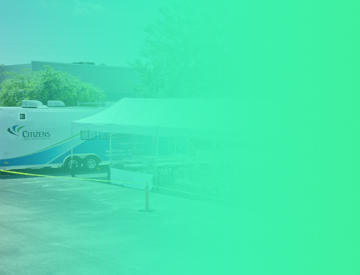On March 8, Citizens transitioned to a multifactor authentication format for accessing ClaimCenter® and PolicyCenter®. External system users will begin using their Citizens-registered email as their login ID and will create a new password to access these systems. Refer to the System Access Guides for more information: Agents, Claims, and BPO Partners.
Alerts
Home Inventory - Public
Carousel Storms
Home Inventory
Navigation Menu
Breadcrumb
Web Content Display (Global)
Home Inventory
Asset Publisher
A home inventory can help you ensure that you have adequate insurance in the event of catastrophe and can help you verify your losses.
A home inventory is a complete record of your belongings, including their purchase date and approximate value. A complete inventory can help you identify items that may be difficult to document after damage, especially smaller items, and can serve as a starting place when you report a claim.
Home Inventory Options
Video
Complete a video inventory by walking through your home or apartment and narrating the items in each room.
Photo
Create a photo inventory by taking photographs of your items, including serial numbers, and creating an album of your home’s contents.
Online
Online inventory templates or smartphone apps are available to document your belongings. These resources may provide useful checklists to ensure you do not miss anything and may even allow you to store a copy of your information in the digital “cloud” so you can access the information even if your computer or phone is lost or damaged.
Be Thorough
Whatever method you choose, go room by room, taking note of each item’s value, serial number (if applicable), unique design details and date of purchase. If you have receipts for the items, keep copies with your inventory documentation.
Keep Your Inventory Safe
Store a copy of your inventory in a safe place outside of your home (in the “cloud,” in a safe deposit box, etc.). You also may want to keep a copy with your other important financial information (home insurance policy, mortgage documents, bank information, etc.). Consider storing electronic copies of these documents on an external storage device (portable hard drive or thumb drive) or cloud service so you have one go-to location following a loss.
Update Regularly
Once you have completed your home inventory, set a calendar reminder to update it quarterly or whenever you make a major purchase, such as a new TV or refrigerator. Your inventory also can help you perform your annual insurance policy review by helping you and your agent more easily determine the value of your personal property and evaluate whether your policy coverages are adequate.
Web Content Display (Global)
#CitizensIsReady
Asset Publisher
CAT Training Vital Before Disaster Strikes
An effective catastrophe (CAT) response depends on an educated workforce, and many of those workforce members for Citizens are the independent adjusters who must know our latest systems, processes, policies and emergency-specific responses.
Citizens conducts year-round preparedness training and disaster exercises for staff and independent adjusters. Participants are evaluated to help assign roles and determine which scenarios qualify for a CAT response, perhaps the most intensive service the company provides.
In addition to conducting off-site adjuster training, Citizens annually identifies internal business unit-specific catastrophe response functions that require testing. On-site stress tests are held to ensure critical functions will work correctly in an actual catastrophe.
“It’s a never-ending process of teaching, training and testing,” said Craig Sakraida, Director of Catastrophe Operations. “We want to make sure all of our workforce – including our independent partners – are ready if Mother Nature decides to call.”




